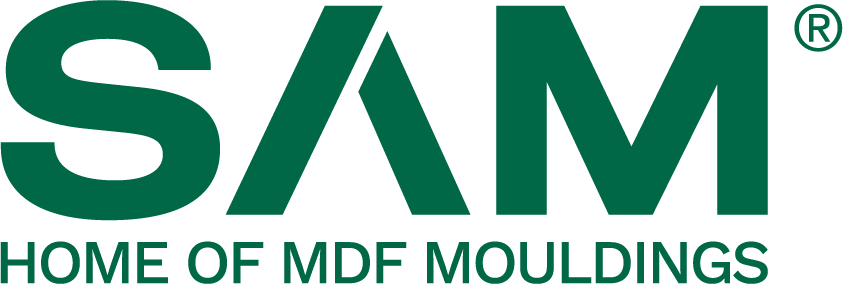Veneered MDF vs Solid Wood Skirting and Architrave
Selecting the right skirting and architrave is essential to guarantee durability and the best quality finish for your project. When it comes to skirting and architrave, it is MDF and hardwood that are the most popular choice of material. MDF is a versatile solution as it can be supplied in various different finishes, such as primed, fully finished and wrapped. If it’s a wood grain finish you are looking for, then real wood veneered MDF is a great option to match seamlessly with wooden doors and floors. Aesthetic isn’t the only factor to consider when choosing between veneered MDF and solid wood, you should also consider cost, durability, ease of use and environmental impact. This blog will take you through both materials side by side to decipher the pros and cons of each.

Is Veneered MDF cheaper than Solid Wood?
One of the main advantages of veneered MDF is that you can achieve the real wood aesthetic but at an affordable price. SAM wrapped MDF mouldings use real wood veneer such as oak, guaranteeing high quality and a great match to existing doors and floors. Veneered MDF is great for large scale projects where you need to control spending and stay within budget. They give the look and feel of a real wood finish but at a much more affordable cost, making them a popular pick for developers and commercial builders.
Solid wood mouldings tend to be the favourite for traditional style projects that require a more expensive, premium finish. This is due to sourcing the material; slower growth of trees means that obtaining the material is a long process, adding to its overall higher cost. Solid wood is also more difficult to cut and manipulate compared to MDF, adding extra manufacturing and labour costs.
The Durability Test
When it comes to durability, both materials are well equipped for skirting and architrave application. Solid wood skirting and architrave are heavier in weight and very long-lasting, however, veneered MDF is popular due to its stability in challenging conditions.
SAM MDF skirting and architrave are moisture-resistant making them suitable for high humidity environments such as kitchen and bathrooms. Due to its composition, veneered MDF is resistant to warping but is still flexible for uneven wall application. This makes it a highly durable and easy to use material.
With solid wood skirting and architrave, you are getting a durable product that offers resilience to everyday wear and tear, such as minor impacts from furniture. However, solid wood mouldings aren’t moisture resistant which may lead them to warp or rot in high humidity areas.
Ease of Use
So, which is easier to install? As mentioned previously, solid wood skirting and architrave are weightier which can make them trickier to work with, for both merchants and the trades. There may be more skill required when preparing, cutting and installing solid wood skirting and architrave due to its density. There may still be maintenance required after installation is complete, such as resealing or refinishing, to ensure they look their best for longer.
Veneered MDF skirting and architrave are lightweight, smooth in finish and need little preparation in comparison to solid wood. The smooth, veneered surface means there is no sanding or painting required, simply cut the lengths to size, fit to the wall and seal the white oak veneer finish in your preferred varnish. SAM wrapped MDF skirting board and architrave can also be supplied with a 20% or 30% sheen veneer, further reducing preparation time as there is no need to add a varnish coat.
Oak Veneered MDF vs Solid Wood: Which is more Sustainable?
MDF mouldings have a good reputation for being a sustainable product. This is because MDF is inherently environmentally friendly, as it is made from recycled wood fibres that are compressed and glued together. With no knots or defects, there is less wastage when working with veneered MDF lengths, another win for the environment. With sustainability being a key responsibility for businesses of all sizes, MDF is a great choice to help meet those sustainability goals.
Solid wood has its own environmental benefits. If sourced well and correctly certified, real wood can also be suitable for projects aiming to be more environmentally friendly. It is a natural material making it biodegradable, but care should still be taken when using the material to avoid unnecessary wastage. As solid wood naturally has defects and splits, the scale of offcuts may be higher than that of veneered MDF skirting and architrave.
It’s clear to see that by choosing veneered MDF skirting and architrave over solid wood, you will see numerous benefits. For a merchant, veneered MDF is exceptionally high quality, easy to store and maintain and cost-effective. Your customer can also benefit from less wastage, ease of installation and a reliable, durable finished product that will match effortlessly with existing real wood fixtures. Veneered MDF is practical and provides the same desired aesthetic as solid wood but at a much more attractive price, without compromise. Veneered MDF skirting and architrave is the perfect choice for the more environmentally conscious too, given its sustainability credentials. Enjoy the benefits of a high-quality finish with a modern engineered twist and transform any space with ease.

